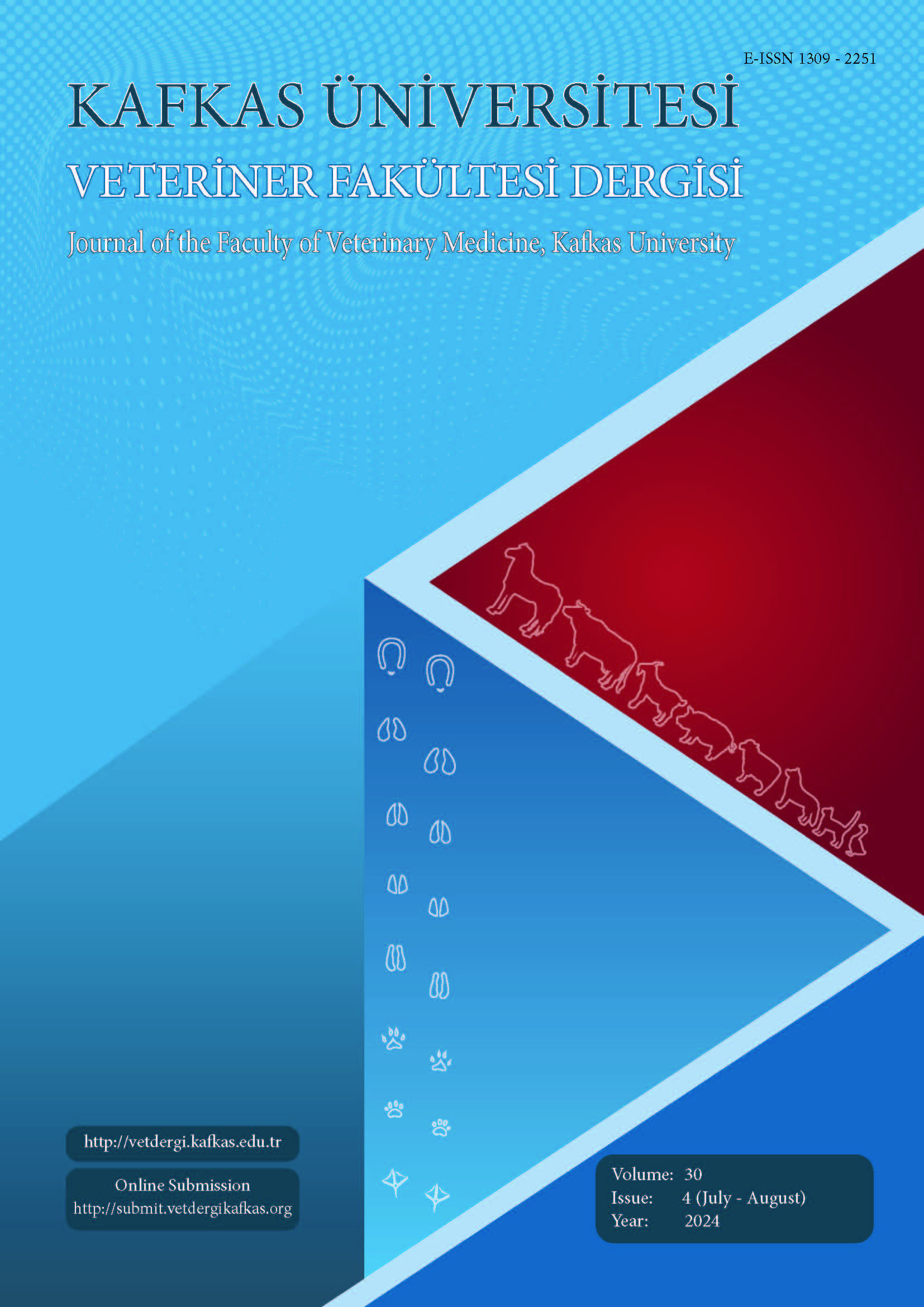
This journal is licensed under a Creative Commons Attribution-NonCommercial 4.0 International License
Kafkas Üniversitesi Veteriner Fakültesi Dergisi
2024 , Vol 30 , Issue 4
Distribution of Species and Biotypes of Brucella Isolates Obtained from Sheep and Cattle Abortions
1Kafkas University, Faculty of Veterinary Medicine, Department of Microbiology, TR-36300 Kars - TÜRKİYE2Kafkas University, Faculty of Medicine, Basic Medical Sciences, Department of Medical Microbiology, TR-36300 Kars - TÜRKİYE DOI : 10.9775/kvfd.2024.31980 This study was carried out to evaluate Brucella spp. isolated from various tissue samples of aborted sheep and bovine fetuses sent to the laboratory of Department of Microbiology, Faculty of Veterinary Medicine, Kafkas University between 2011 and 2023 years and determine the Brucella species and biotype diversity that carry a higher risk for abortion complications in these animals. In this context, 155 Brucella spp. isolates obtained from aborted fetuses were identified by species-specific Bruceladder PCR and biotyped using conventional biotyping methods. As a result of the study, B. melitensis and B. abortus were identified in 92.5% (n=74) and 7.5% (n=6) of sheep, B. abortus and B. melitensis were identified in 80% (n=60) and 20% (n=15) of cattle, respectively. B. melitensis biotype 2 in sheep and B. abortus biotype 3 in cattle were found as the dominant biotypes in these definitive hosts. In the Kars region, where brucellosis is endemic, while the biotype responsible for cattle brucellosis (B. abortus biotype 3) maintained its dominance over a 20-year period, there is a profile change from B. melitensis biotype 3 to B. melitensis biotype 2 in sheep. Considering the period covered by the study and the sample size analyzed, the data obtained provide up-to-date and important information about Brucella species and biotypes in Kars region and the animal species that host these agents. Keywords : Sheep, Cattle, Brucella melitensis, Brucella abortus, Biotype, Bruce-ladder multiplex PCR










